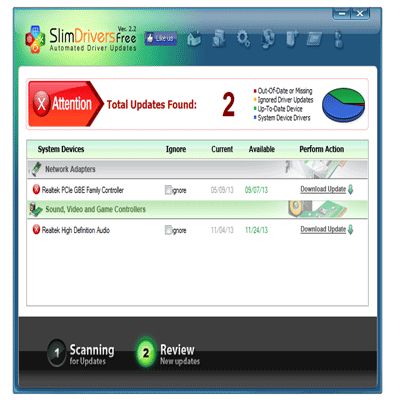Error code 0xc000000f which is present in Windows 10 highlights an issue that is interlinked with Boot Configuration Data (BCD). The time users see this message on their PC’s screen it means that your system is in need to be solved.
In this article, users will find some methods through which they can solve Error code 0xc00000f in Windows 10. The best thing is to check and fix your system, make an EFI system partition, and repair the Boot Configuration Data.
Following are some methods through which users can resolve error code 0xc000000f:
1). Delete Devices or USBs that are Interconnected to the System:
USB that we insert in the ports of the laptop is usually the reason for this error. So users are supposed to take out all the cables or USB and restart their system and then see in case the problem has been solved.
2). Checking Hard Drive:
Before going for anything else, confirm it first that your system’s hardware is not making a fuss. For this purpose just run chkdsk tool and have a look at your hard disk.
- As the first step insert your installation CD/DVD into the drive and start your system. Now choose the option of Repair your computer from the bottom part after you set the language, keyboard, and other features.
- Now single out the Windows installation drive, which would be like C:\, and tap on the option of
- After the completion of the above steps System Recovery Options screen pops up and launches Command Prompt while utilizing these options. Then write the below instruction and execute it by tapping Enter
chkdsk C: /f - Then let it end the procedure and see in case there is an issue in your hard drive.
3). Fixing your PC with Setup Wizard:
This procedure is one of the best to fix Error Code 0xc00000f in Windows 10. Here users should only know that they have legitimate Bootable media in USB, Flash Drive or CD/DVD.
- As the first step insert the CD/DVD and choose Language so you can download it. Apart from that Time and currency format, Keyboard input method from the respective dropdowns and click Next.
- Now choose the option of Repair Your Computer from the Setup wizard and permit the device to resolve the error and see in case your system initiates without any issue.
4). Fix your PC:
- As an initial step place, the installation media equipped USB / Drive DVD/CD/ Pen into the port or optical DVD Drive.
- Then reboot your system and tap F2. The Key can be different because of the model and version of the PC, as some work with F3 or F4 or Esc or Del. The time you see that BIOS screen pops up just pick the right Boot Order.
- After the completion of the above steps now set your USB/ Drive DVD/CD/ Pen name that it is present in the row of the 1st Boot Device.
- At the end click F10 so you can save the changed setting and restart your system. It might probably reboot with the new installation media and solve Error Code 0xc00000f in Windows 10.
5). Rebuilding Boot Configuration Data:
Windows adds a bootrec.exe device that is utilized to build BCD again. BCD manages the startup procedure easily the time you build it again.
- As the first step input the real bootable USB / Pen Drive/ CD/DVD/ having Windows installation and start your system. The time you see that the screen asks for a key then tap it so you can proceed with the procedure of booting.
- Now choose the language, keyboard, currency, and time and pick Next.
- Then single out the OS you want to fix and select Next. You would be able to see that now you are in a recovery environment so choose Command Prompt.
- After the completion of the above steps you will find the black panel, so write exe and click Enter. You will see that this step will rebuild the Boot configuration data and make your system in the previous state.
In case the method doesn’t work just remove the previous BCD and build it once again. Users can do it by going through the below instructions:
bcdedit /export C:\BCD_Backup
c:
cd boot
attrib bcd –s –h –r
ren c:\boot\bcd bcd.old
bootrec /RebuildBcd
Now let all these instructions execute so that it may reboot without any issue.
6). Fixing BCD:
Here in this method, we will reveal the BCD file and its parent partition so that we would be able to solve it or make a new BCD file from scratch.
You just need a Windows 8 or 10 installation media in your system that is in a format of USB with a FAT32 file system. A UEFI-based system like the one you have will not identify an NTFS-formatted USB as a device that is bootable. To make a Windows 8 installation media, users should have at least a 4 GB USB drive and it should be empty.
Start the file that was installed and tap Yes in case UAC precautionary message pops up. You can choose any Edition, Language, and Architecture as you are not downloading Windows. Now Press Next.
Here pick your USB drive and tap Next. Confirm that our USB is interconnected with the PC.
Now wait for some time till the procedure end and go for the commands that are on screen.
After the completion of the above steps now you see that once you have the installation media ready, interconnect the USB to the system that is causing the issue.
Start your system and click the suitable key to Boot from some other device. These keys may vary according to the version and models of PCs.
In case you are unable to boot from the USB then confirm that CSM and Secure Boot features are Disabled in the settings of your BIOS.
The time you are in the Boot device selection screen, just choose your USB.
When you are on the installation screen, click and Hold the Shift key and tap F10 to start a black window named Command Prompt, write the disk part, and tap Enter.
Here write list disk and click Enter to list all storage disks interlinked to your system.
Then write sel disk 0 and click Enter to pick your disk with Windows 8 in it.
After the completion of the above steps write list vol and click Enter to list all volumes
You have to identify 2 volumes, the EFI and the volume on which Windows is downloaded.
You would be able to see that your EFI volume has FAT32 written in the Fs column. Its size would be 100 MB and will have System written under the section of Info. It may also have BOOTSTRAP written in the Label column. That’s the way you would be able to identify your EFI volume.
Keep in mind the Volume number. In case you are unable to find your EFI volume, go for the next method.
You will see that the Windows partition has C in the Ltr column and there will be Boot written in the column of Info. Keep in mind it’s Ltr down.
We will assign a letter to the EFI volume by choosing Volume 1 and clicking Enter. Then write assigned letter P and tap Enter.
Here then write exit and tap Enter.
Write cd /d P:\efi\microsoft\boot\ and click Enter.
After that, you need to write bootrec /fixboot and click Enter and you will see that a new boot sector will be made. Then write ren BCD BCD.bak to render the old BCD file useless as it is problematic, as it will permit you to make a new BCD file. Then write bcdboot C:\Windows /l en-us /s k: /fALL and click Enter.
At the end close the black window and reboot your system. You will see that now it will boot in a normal way.
7). Creating an EFI Partition:
In case your EFI partition is misplaced, you can make a new one. For this purpose, you just need Windows installation media and 200 MBs of free space on your disk.
You can do it by following the procedure in the above method so you can make a Windows installation media and boot from a USB and reach the black Command Prompt window.
As the first step in the black window, write Diskpart and tap Enter.
Then write the list disk and click Enter.
Now choose disk 0 and tap Enter to choose the disk in which you want to make a new EFI partition.
After the completion of the above steps write list partition and click Enter to list all partitions.
Here write Select Partition 1 click Enter and think that the chosen partition will have 200 MBs or more free space. After doing that write shrink desired=200 minimum=200 and tap Enter.
Now write create partition EFI and click Enter then write list partition once more and tap Enter.
Write Choose partition 2 and click Enter thinking that the latest made 200 MB partition is partition 2.
Here write format fs=fat32 and tap Enter.
Write list vol and click Enter so you can list all volumes. Keep in mind the volume of the newly made partition of 200 MB size.
Write choose vol 3 and tap Enter. Think that the volume number of the EFI partition you noted is 3 last time. Then write assign and tap Enter.
Write list vol and click Enter to see which Letter (ltr) is given to the 200 MB EFI partition. Keep in mind the drive letter down.
You are supposed to identify and note down the drive letter (ltr) of the volume that has your Windows partition. Users can identify it by checking for Boot in the Info column. Most of the time it is the drive letter C so just note it down.
Write bcdboot C:\Windows /l en-gb /s B: /f ALL and click Enter. Think that your Windows drive letter is C and B is the drive letter that is given to your EFI partition.
At the end just reboot your PC and hopefully, your issue has resolved.
Conclusion:
We hope that with the help of this article, users would be able to fix error code 0xc000000f issues.










